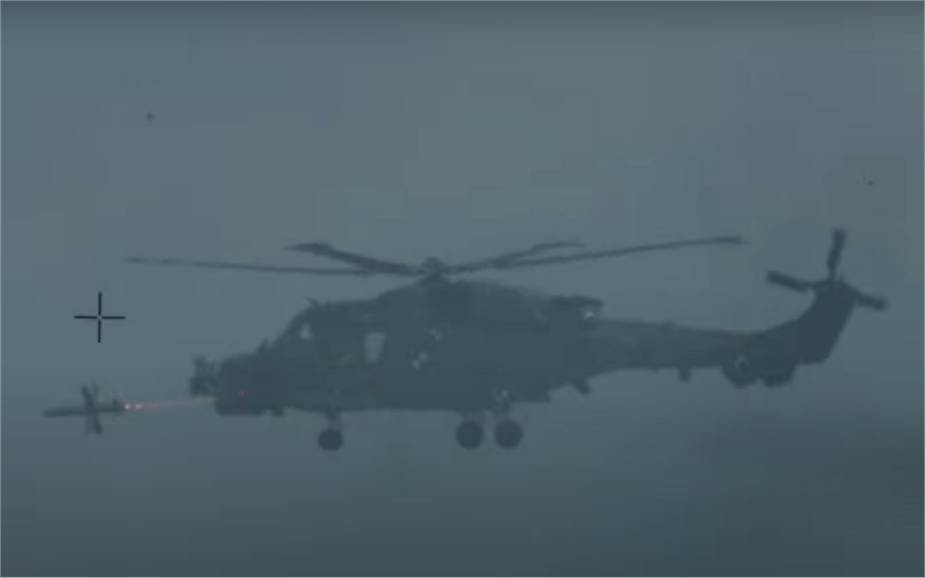Breaking news
South Korean Navy conducts live firing of Spike NLOS missile from AW-159 Wildcat naval helicopter.
According to a video released on Facebook, January 16, 2021, AW-159 Wildcat helicopter from the South Korean navy has recently conducted a live firing exercise with the launch of Spike NLOS missile against a surface target.
Follow Navy Recognition on Google News at this link
 South Korean Navy conducts live firing of Spike NLOS missile from AW159 Wildcat naval helicopter. (Picture source South Korean TV)
South Korean Navy conducts live firing of Spike NLOS missile from AW159 Wildcat naval helicopter. (Picture source South Korean TV)
The AW159 Wildcat is a naval helicopter manufactured by the company AgustaWestland and used to conduct search and rescue and anti-surface warfare missions. The AW159 is in service Philippines, South Korea, and the United Kingdom.
In January 2013, the AW159 was selected as a naval helicopter for the' South Korean Navy. A total of eight helicopters were purchased by South Korea to perform search-and-rescue missions, anti-submarine warfare, and surveillance. In January 2014, DAPA (Defense Acquisition Program Administration) announced it will equip its Wildcat helicopters with Spike NLOS missiles to provide a stand-off attack capability for engaging targets such as ground artillery and small vessels.
The first four helicopters AW159 were delivered to the South Korean Navy in June 2016 and commissioned in February 2017. The helicopters operate from the Navy's Incheon-class guided missile/coastal defense frigates.
The SPIKE family is an advanced naval missile system utilizing a dual EO sensor, CCD/IIR, and an automatic tracker for day and night applications. It is capable of pinpoint accuracy for surface-to-surface and surface-to-shore target engagement at ranges up to 32 km.
The NLOS naval version of the Spike has a maximum firing range of 32 km and able to hit Non-Line-of-Sight (NLOS) targets with pinpoint accuracy. The missile enables real-time tactical intelligence gathering and the ability to switch between targets during missile flight, as well as control of aborting the mission. The NLOS systems enable the missile to effectively strike targets beyond the line of sight.
Effective in low-intensity asymmetric engagements, high-intensity anti-armor conflicts, and stand-off combat, the NLOS missile can be supplied with a variety of warheads including High Explosive Anti-Tank (HEAT), Penetration Blast Fragmentation (PBF) with warhead detonation control, and Fragmentation.
The NLOS missile is equipped with a passive dual-mode E-O seeker, an Imaging Infra-Red (IIR) camera, advanced image processing tracker, and Charge Coupled Device (CCD) which enable its day/night capabilities.



























